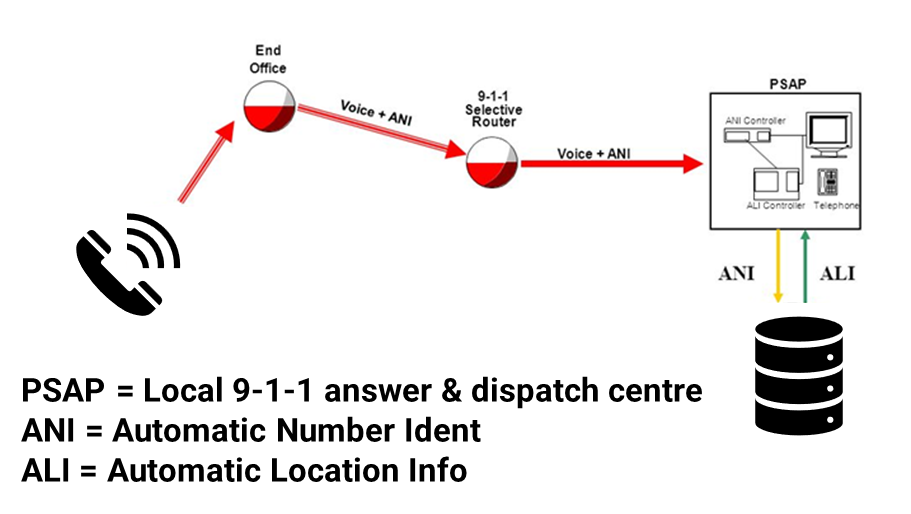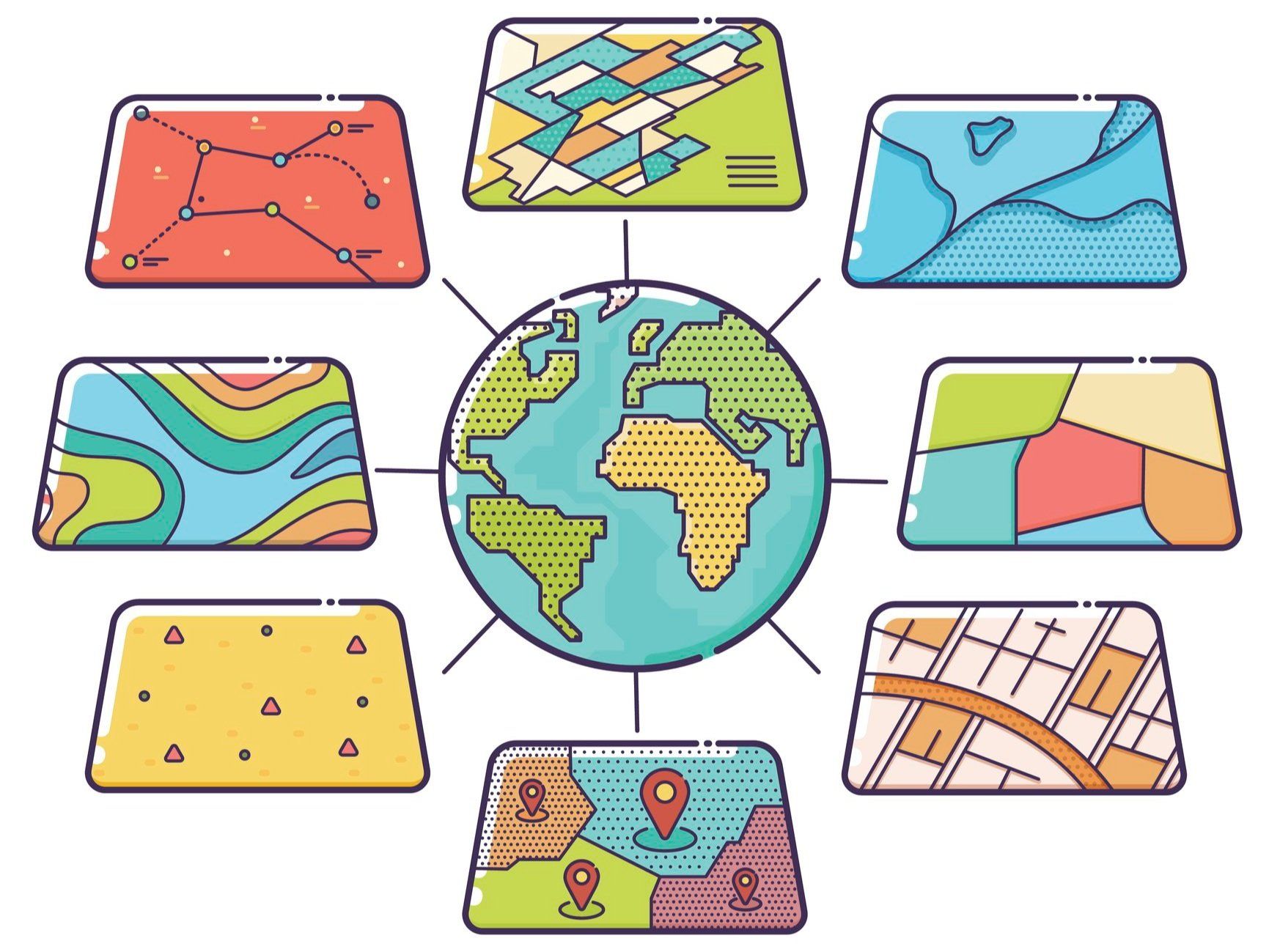Blog
Authoritative Data for Next Generation Emergency Services
June 29, 2022

What is Authoritative Data?
Authoritative data is a repository or system which contains identifiable information that’s considered to be the primary or most reliable source for this information. Authoritative data comes from authoritative sources, is officially certified, and deemed trusted.
“Land surveyors were probably the first to use the term authoritative geospatial data and they have been producing authoritative data for some time. Surveyors define authoritative as data that contains a surveyor’s professional stamp and that the data can be used for engineering design, determination of property boundaries and permit applications. In essence, the term carries a certification of positional accuracy.” – ESRI
The Pan-Canadian Action Plan for GeoBase II and Collaborative Geospatial Architecture Working Group Final Report indicated:
“The term “authoritative” should be applied only to data that is legislated or regulated. Should it be necessary to differentiate data supplied by government agencies from other sources of data – it is suggested that discussion should be about “trusted” data; and validation must be part of the certification of authoritativeness.”
Authoritative data and the 9-1-1 Legacy System, ANI/ALI & MSAG

“To help you, they need to find you.”
Validating the location of a 9-1-1 caller, before the call is placed, began with Enhanced 9-1-1 (E9-1-1) where public safety agencies started collecting and maintaining address or location data into something called the ALI (automatic location information database) and MSAG (master street address guide).
The MSAG Directory contained all the addresses residing within a PSAPs jurisdiction, and was the responsibility of the state or municipal authority for update, maintenance, and distribution. Each address in the MSAG was assigned a 7-digit ESN (Emergency Service Number) to decide which police, fire and EMS agencies would respond to the 9-1-1 call within that specific geographical area.
ANI, or Automatic Number Identification, as the name implies, is the landline telephone number calling 9-1-1 and displayed to the PSAP (Public Service Answering Point). This telephone number, plus the location information (address, incl. details like building name, suite, floor, or room number etc.) of that call, is stored in ALI database.
Network carriers ensured a customer’s civic address correlated to a correct entry in the MSAG. They sent that information to the 9-1-1 state authorities who looked after the ANI/ ALI. This data is then forwarded to “9-1-1 Net” to validate, ensuring an address provided by the Network carrier was in fact a real civic address. If validated it’s deemed authoritative…reliable and trusted.
Authoritative data and Next Generation 9-1-1; LVF, ECRF, LIS
Location is fundamental to the effective operation of the NG9-1-1 system.
For E9-1-1 the location accuracy of the 9-1-1 ALI data lay with a local 9-1-1 Database Administrator who maintained the MSAG records based upon the ALI service provider's standards. In NG9-1-1, GIS replaces MSAG in the form of a Location Validation Function (LVF) and Emergency Call Routing Function (ECRF).
 GIS
is a system which creates, manages, analyzes, and charts all types of data to a map.
GIS
is a system which creates, manages, analyzes, and charts all types of data to a map.
GIS technology is the authoritative data at the center of NG9-1-1 and is used to route 9-1-1 calls and dispatch responders. The ECRF dictates which PSAP to send the call to for service, and the LVF validates the street address for correct routing and resource dispatch.
To function correctly, authoritative GIS data, such as street centerlines, address points and call center boundaries MUST exist and have to be meticulously maintained so they remain accurate.
For NG9-1-1 the ALI database is also replaced by something called a LIS (Location Information Server) whose records need validation against the LVF, just as ALI did against the MSAG.
Responsibility wise, the LIS would be maintained (or contracted) by the Service Provider and the LVF/ECRF will be maintained by Public Safety. In addition to replacing the ALI database with the LIS, the accuracy of the GIS data now lies not only with the 9-1-1 database Administrator, but also with a GIS Administrator.
Validating locations stored within a location database is vitally important. In both E9-1-1 and NG9-1-1, invalid locations associated with subscriber records negatively impact emergency response, making it time-consuming and sometimes impossible to dispatch first responders to specific call locations and for NG9-1-1, invalid locations may result in routing failures and complicate the formatting of call-taking displays.
So where does NG location data come from?
The same place it always has:
Cell tower ID and/or cell tower triangulation are traditional methods still used to locate mobile calls; however, they are often unreliable, offer large search areas, with low location accuracy in urban settings. Rural areas with few cell towers also suffer the limitations of cell tower capability. Cell Tower ID is reliable for call routing purposes but prone to error for areas located near 9-1-1 jurisdictional boundaries.
Handset-Derived Location (such as AML, ELS, HELO etc.) refers to mobile devices which can “locate themselves” if provided access reference/orientation points. Just as ships used to navigate by the stars, these smart devices use tools such as GPS (GNSS), Cell Tower and Wi-Fi for localization if the location points of GPS and Cell Towers are known. However, for indoor emergency calls, GPS and cell tower triangulation offer little-to-no visibility.
Wi-Fi is used for the urban and indoor component, but multipath Wi-Fi distortion and crowd-sourced data means this estimated information can be unverified, distorted, non-authoritative and “noisy”. Additionally when any handset is not ‘connected’, its Media Access Control (MAC) address can change (or be “randomized”) to comply with privacy policies, meaning the location data harvested isn’t that reliable. So whilst NG9-1-1 requires validated location, the sources of location are not validated, and this is problematic for citizen privacy. The data has therefore not gone through an authoritative process.
EML is a Tag-based location system which provides dispatchable address AND uses authoritative data reference points
Going beyond the current GPS, cell tower and crowd-sourced Wi-Fi location methods, Emergency Mobile Location (or EML) is a tag-based location methodology using the known physical placement of existing 802.11 Wi-Fi access points to provide accurate indoor location information.
How does it do this?
The IEEE 802.11 Wi-Fi standard relies on access points to constantly publish information about themselves within a beacon management frame. These frames of data include enough information for a mobile device to understand which wireless networks are available and how to connect to them. The EML TAGs also sit in the beacon management frame, so when the mobile device (also referred to as a Wi-Fi client) scans the ecosystem during an emergency call, it picks up the contents of the beacon management frame and the TAG (with it’s unique identifying data attached) and subsequently provides dispatchable location.
How is this authoritative?
Internet Service Providers (ISPs) manage Wi-Fi access points and maintain an inventory of their own equipment including the address and placement of that equipment. By providing this information to Emergency Services, the unique values or TAGs broadcast by Wi-Fi access points can be validated and associated to the dispatchable address of that Wi-Fi access point via the MSAG or LVF.
All the location information about the access point is maintained by internet service providers and enterprise network administrators, in order to know where their equipment is installed. Mobile phones detect this equipment and communicate it to an EML server which provides a detailed, precise location (within the short range of the nearest access point).
In the EML world, additional to ANI/ ALI information for fixed voice services, Telcos or ISPs would provide the association of BSSID (MAC addresses) to a Civic Address to the 9-1-1 database. As with the original MSAG database this data can be sent to 9-1-1 Net where addresses are authenticated and verified…creating an authoritative DB for Next Generation 9-1-1!
A simplification of the process would look something like this:
- Mobile/SIP Client initiates 911/112 voice call. Call is routed to Emergency Service Routing Proxy (ESRP).
- Mobile/SIP Client initiates data session with EML Service.
- Algorithms are run to determine the detailed dispatchable address. Note EML Server can be inside or outside of ESInet
- EML Server delivers detailed location payload to LIS
- ESRP retrieves location from LIS. Now ESRP knows the location of the originating call.
- ESRP now asks ECRF (Emergency Call Routing Function) “What is the destination of my call?” Where to send the call is located in ECRF.
- Call is then routed to appropriate PSAP.
EML provides dispatchable address for all NG mobile 9-1-1 calling using the authoritative database of internet access points as its reference. This creates a nationwide network of verified location datapoints that enable dispatchable address plus the indoor component for mobile and many other communications services, such as those for Persons with Disabilities, VoIP, VoIP Apps, social media, IoT and AI. EML also provides a location element with the call, (or any IP communications packets) enabling more efficient NG 9-1-1 call routing.
Sources:
- https://resources.esri.ca/news-and-updates/public-safety-has-always-been-geocentric-even-if-you-didn-t-know-it
- https://resources.esri.ca/videos/new-brunswick-blazes-trail-on-getting-its-data-ready-for-ng9-1-1?platform=hootsuite
- https://cams-lacounty.hub.arcgis.com/pages/ng9-1-1
- https://resources.esri.ca/news-and-updates/what-does-the-term-authoritative-data-really-mean
- https://cdn.ymaws.com/www.nena.org/resource/resmgr/standards/nena-inf-027.1-2018_lvfconsi.pdf